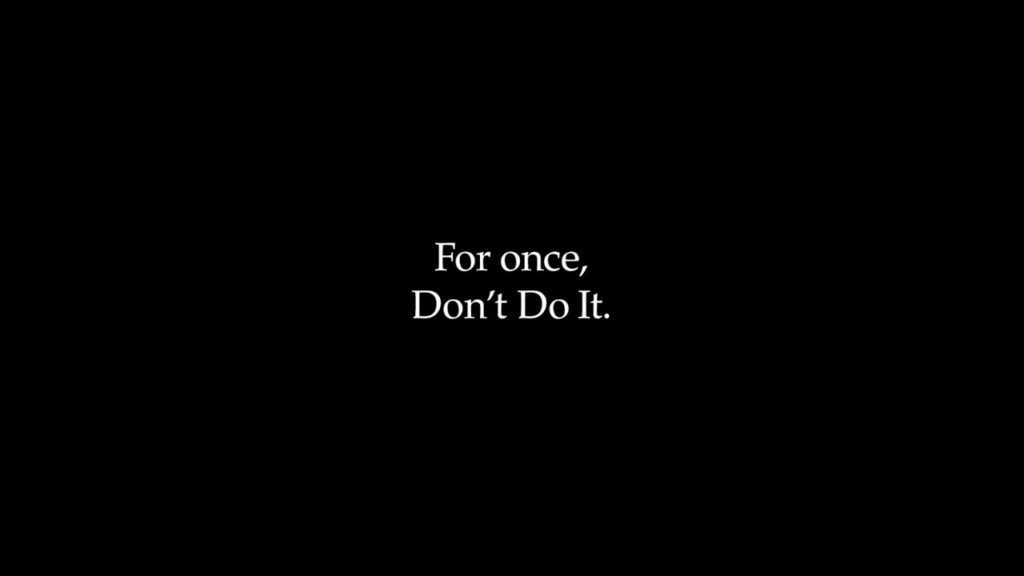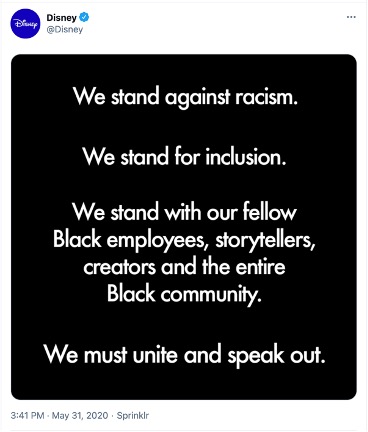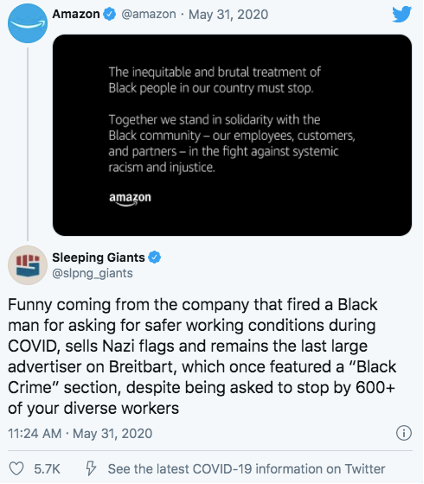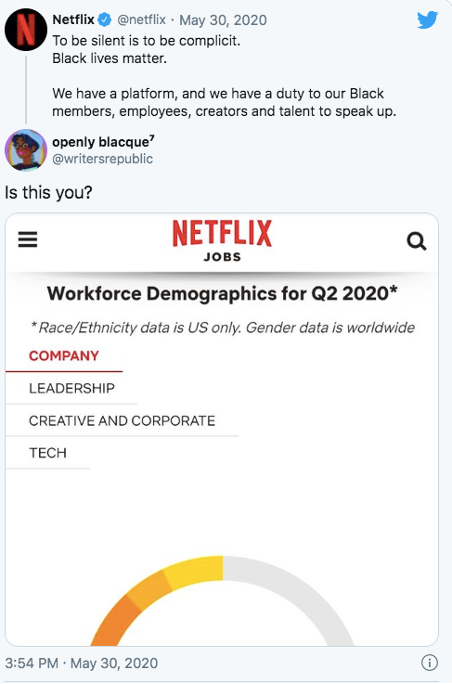[Editor’s Note: This blog post is an extension of a post that originally appeared on Forbes.com.]
Welcome to the era of picking sides.
It doesn’t matter if you’re a regular peep walking down the street or rep a Fortune 100 corporation — it’s no longer enough to mind your own business.
There are positives and negatives to attaching your company to a particular cause. What flies here in the Bay Area might not fly for our friends in Austin or Boston. And vice versa.
Yet, we’ve seen a growing sentiment that brand activism — sincere, authentic, and actionable — boosts a company’s profile, impacts the bottom line, and raises morale.
Our agency’s position is that growing the bottom line should not be the only reason a company decides to take a stand. Rather, we feel that brands should take a stand because it’s in the company’s core DNA.
To be transparent: our agency is in the process of identifying weaknesses and opportunities in terms of our team, the causes we support, and the clients we take on. We are a work in progress and hope to grow continually.
Why brand activism is important
Let’s look at the numbers.
A recent survey by Gartner, Inc. identified three significant areas that will impact consumer values and buying behaviors in 2021: life realigned, the wealth gap and seismic civic engagement.
Analysts explain that “seismic civic engagement” has changed how consumers look at brands. “Equality is now the value for which there is the highest level of identification for U.S. consumers,” they write. “This marks the first time ‘loyalty’ has been bumped from the top spot of consumer values in the U.S. in over a decade.”
Gartner is not the only consumer watcher suggesting that consumers are changing how they pick brands. With data from research company Opinium, Marketing Dive reported that “almost three-quarters (71%) of U.S. adults said brands have a role in responding to the issues of racial injustice and police brutality.”
So, yeah, brand activism is a big deal this year.
How to Build a Brand Activism Plan
Brand definition and building work need to serve as a north star for all companies. It should be done at the genesis of your branding work, but it’s not too late if your company hasn’t done the work yet.
Here’s how to get started:
Step One — Interview and survey as many people as possible in your company to ascertain their beliefs. Some folks might not want to be “on record,” so offer an anonymous option wherever possible.
Step Two — Synthesize the responses into a core belief statement and pass that around to as many people as possible for perspective. Building consensus here is a great way to boost morale and foster connection.
Step Three — Create actionable steps based on the core belief statement. Companies that wish to be catalysts for environmental change can institute an office recycling program. If racial justice is your focus, create volunteer opportunities or ask management to begin regular donations to organizations working to fight for justice. (This is what we do @Farinella)
Step Four — Communicate, update, and remain flexible. One thing we know about our world today — a week or month of activity won’t dent the issues we’re facing. Keeping your team informed will keep them engaged.
Successful brand activism matches brand definition. Ensure you’re aligned, and great things will happen.
Brand Activism We Love: Nike
The George Floyd murder in the summer of 2020 was a signal event around the world.
Brands from McDonald’s to Target took to social platforms to denounce police brutality and pledge support for racial justice. Some tapped into long-standing brand activism campaigns. Many shared nebulous, reactive statements. Others ducked.
One company that activated an effective, sincere, and “on-brand” response was Nike.
In the days following Floyd’s death, Nike released a spot called “For Once, Don’t Do It.” The spot expertly turned Nike’s slogan of “Just Do it” on its head in a thought-provoking call to action.

We’re not here to argue the “goodness” of the spot.
We are here to point out what we learned from the work that Nike’s legendary agency Wieden + Kennedy did: Brands must build a clear and consistent strategy of addressing social and economic issues, especially before hopping on a newsy moment.
Any brand (or agency) that offers one-off, us too, spots feel opportunistic and, frankly, fake.
If your company is about to hit the GO button, perhaps take a second to check your past commitment to activism. The absolute heartbreaking truth is that there will be another opportunity to lend your voice to the conversation.
Again, Nike is an excellent example of a company that’s been in the fight for years.
Beyond the “Don’t Do It” spot, Nike has been showing who they are for years.
To celebrate the 30th anniversary of “Just Do It” — THIRTY YEARS, WHAT! — Nike showed its commitment to racial justice with a spot featuring former NFL quarterback Colin Kaepernick.

The company’s “Equality” campaign preceded the Kaepernick ad by a year.
So, yeah, Nike is all-in. We’re here for that!
But, how did this activism impact the brand’s perception?
An Ace Metrix study showed that 60% of respondents received the “Don’t Do It” ad as “empowering,” and it scored positively for purchase intent. And Nike sales increased 31% after the Kaepernick ad.
There you go.
Brand activism that, um, sucks
Where Nike and a handful of other companies stood up and spoke out, hundreds of others offered mealy-mouthed statements or missed the mark altogether.
Thanks to artist Chris Franklin for this (sadly accurate) example:


Companies like Disney, Amazon, and Netflix were just as bland.
That was Disney’s Twitter post on May 31st.
It didn’t go well. Many consumers were quick to post about Disney’s alleged history of racism and anti-Semitism.
Many pointed out Disney’s hypocrisy because it reacted to a news event and did not have a long-term focus on addressing social and economic issues.
Many pointed out Disney’s hypocrisy because it reacted to a news event and did not have a long-term focus on addressing social and economic issues.
Lydia Ven from the Tab also points out that Disney is still engaging in racist behavior: “…like when they shrunk black actor John Boyega on the Stars Wars posters, so he was nearly invisible for release in China.”
Instead of taking time to reflect on the magnitude of the moment and their role in perpetuating racism, Disney jumped on the bandwagon with no real substance to offer. It would’ve been better if they focused on doing the internal work instead and reporting on what that would look like for them.
Consumers are smart and can sniff our brands who aren’t getting down in the nitty-gritty of brand activism.
Amazon and Netflix fell into the same pitfall. Both lacked a history of real action, and their noncommittal platitudes did nothing but highlight how little they’ve done.

There’s Amazon’s Twitter post with a slap-down from industry watchdog (and former advertising cat) Sleeping Giants.

And this, from Netflix …
The Bottom Line
While it’s too late into this blog post for a TL;DR note, here’s the thing: brand activism is not about posting vague statements of solidarity. It’s about action and long term strategies.
Rather than rushing to make statements and flat social media posts, do the work. Make it a pillar in your brand definition process. Demand that your agency or CMO creates that work.
There are no short cuts here. Consumers will call you out if you try to take any.
It’s important to remember that branding is about exciting consumers enough to take action. Marketing is for building a community around your brand.
Brand activism is the tangible result of defining your company’s core beliefs and putting a plan in action to prove it.
Our position is that companies have a tremendous opportunity to bring people together to better our world, help them connect, build relationships, and live fulfilling lives.
Doing so will serve your brand’s reach, loyalty, and bottom line. Plus, it might help you sleep better at night.
